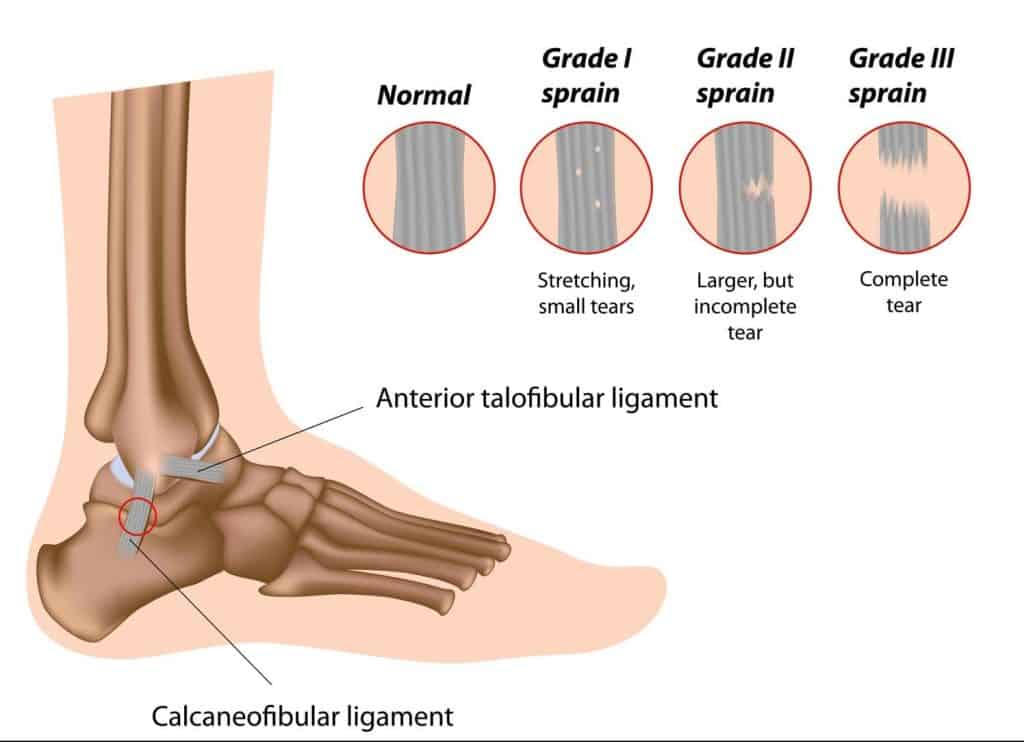A knee sprain is a common injury that occurs when the ligaments, tough bands of tissue connecting bones in the knee joint, are stretched or torn due to sudden force or excessive movement. Ligaments provide stability to the knee, and a sprain can range from mild stretching to complete tearing. Understanding the different grades of knee sprains and how they are managed is essential for proper recovery.

Grades of Knee Sprains:
Knee sprains are typically categorized into three grades based on the severity of ligament damage:
Grade 1 (Mild): In a mild sprain, the ligament is stretched but not torn. This may result in slight discomfort, swelling, and minimal joint instability.
Grade 2 (Moderate): A moderate sprain involves partial tearing of the ligament. This leads to noticeable pain, swelling, bruising, and moderate joint instability.
Grade 3 (Severe): A severe sprain indicates a complete tear of the ligament. This can cause significant pain, swelling, bruising, and pronounced joint instability, making weight-bearing and movement difficult.

Causes and Symptoms:
Knee sprains can result from various causes, including sudden twisting, awkward landings, direct impact, or overexertion during physical activities. Common symptoms include:
Pain and tenderness around the knee joint
Swelling and bruising
Difficulty bearing weight on the affected leg
Limited range of motion and joint stiffness
Instability or a sensation of the knee "giving way"
Diagnosis and Treatment:
A healthcare professional, typically an orthopedic specialist, will diagnose a knee sprain through physical examination, evaluating symptoms and performing specific tests to assess the stability of the joint. In some cases, imaging tests like X-rays or MRI scans may be recommended to rule out fractures or assess ligament damage.
The treatment approach for knee sprains varies based on the severity:
Grade 1: Rest, ice, compression, and elevation (RICE) are often effective, along with anti-inflammatory medications and physical therapy exercises to restore strength and flexibility.
Grade 2: Treatment may involve RICE, bracing or taping for support, and physical therapy to promote healing and joint stability.
Grade 3: Severe sprains may require bracing, crutches to prevent weight-bearing, and more extended periods of rest and physical therapy. In some cases, surgery might be considered for complete ligament tears.
Recovery and Rehabilitation:
Recovery time varies depending on the grade of the sprain. Mild sprains may recover within a few weeks, while severe sprains might require several months. Following healthcare provider recommendations and a structured rehabilitation program is crucial. Physical therapy plays a significant role in restoring strength, flexibility, and stability to the knee joint.
Preventing Knee Sprains:
To reduce the risk of knee sprains, consider:
Proper warm-up before physical activities
Using appropriate footwear
Engaging in exercises to strengthen the muscles around the knee
Employing proper technique during sports and activities
In conclusion, a knee sprain can range from mild to severe, causing discomfort and limiting mobility. Proper diagnosis, adherence to treatment recommendations, and dedicated rehabilitation efforts are key to a successful recovery. If you suspect a knee sprain, consult D. Fahad for an accurate diagnosis and appropriate management plan tailored to your specific condition.


